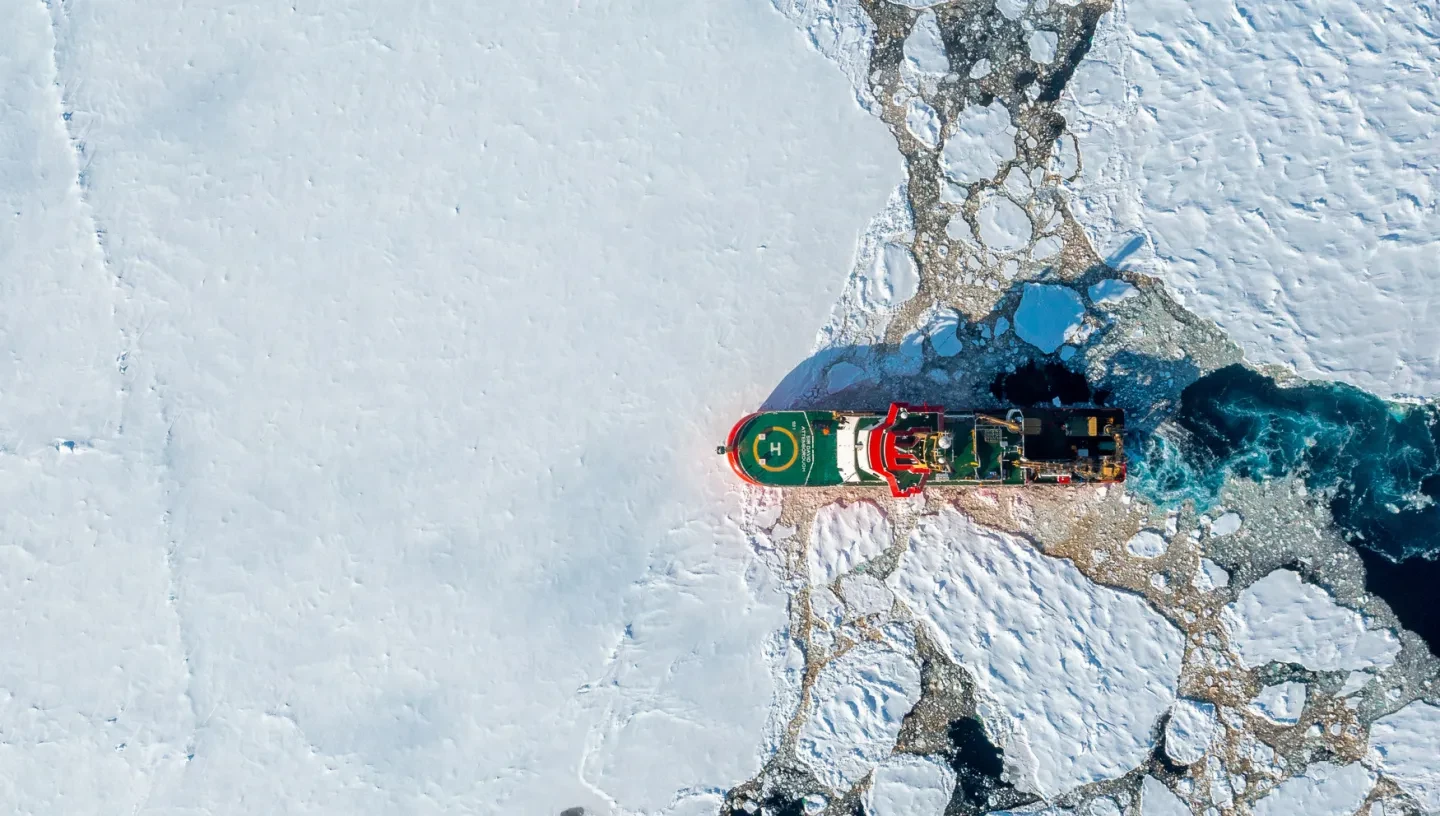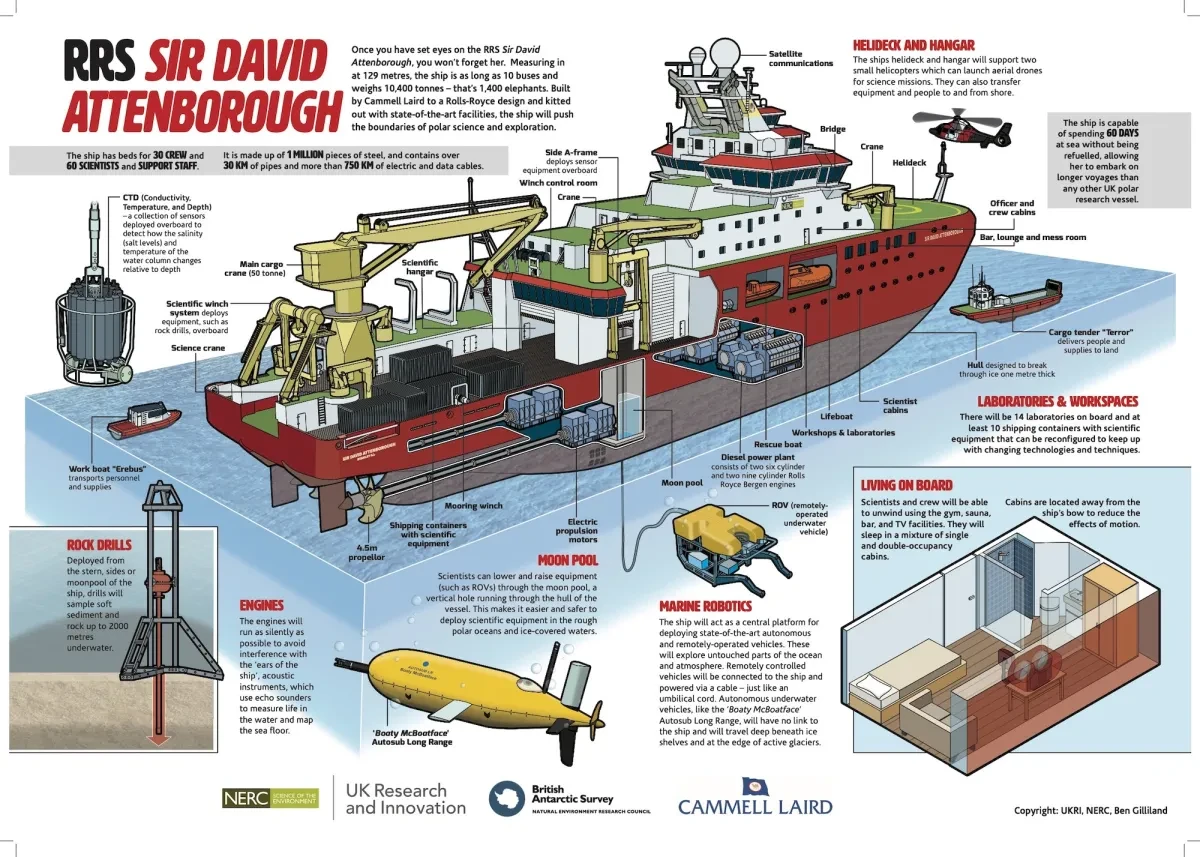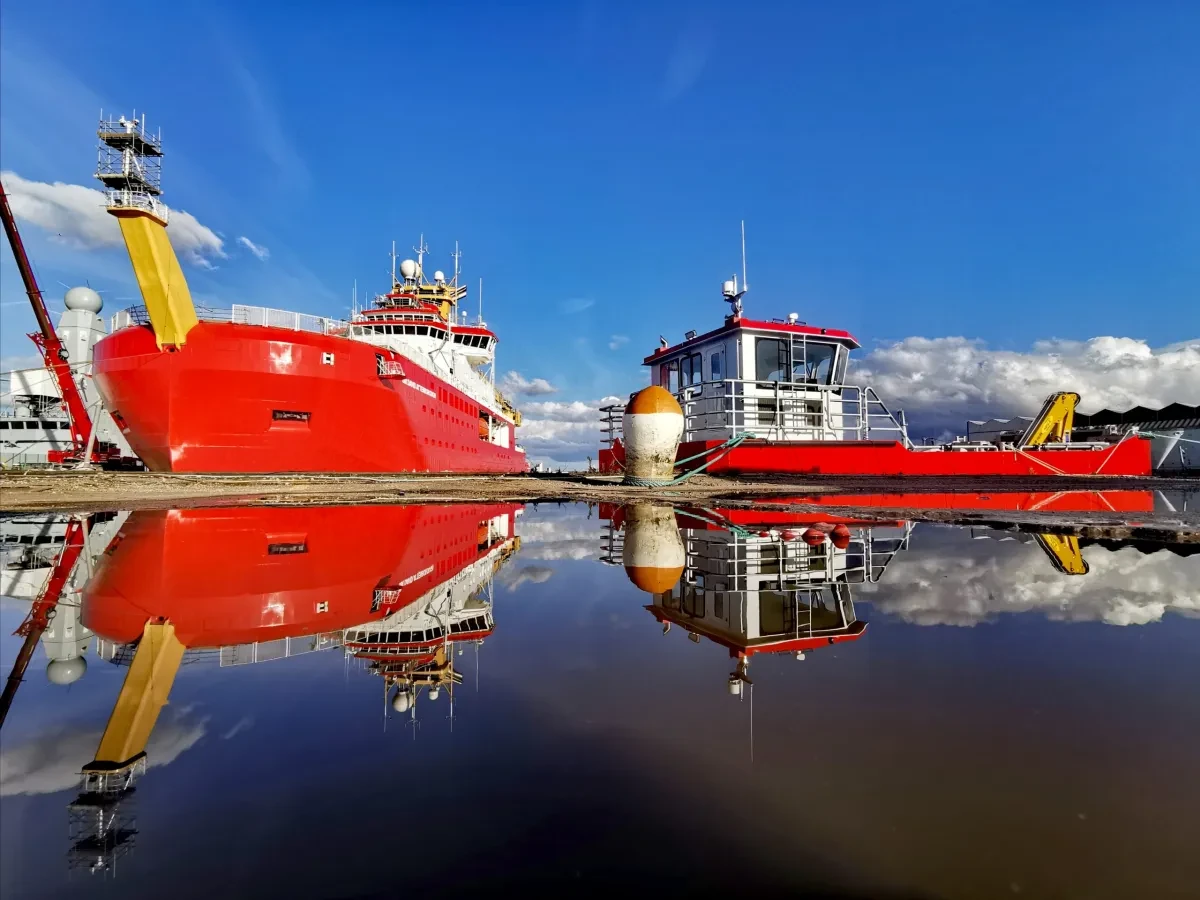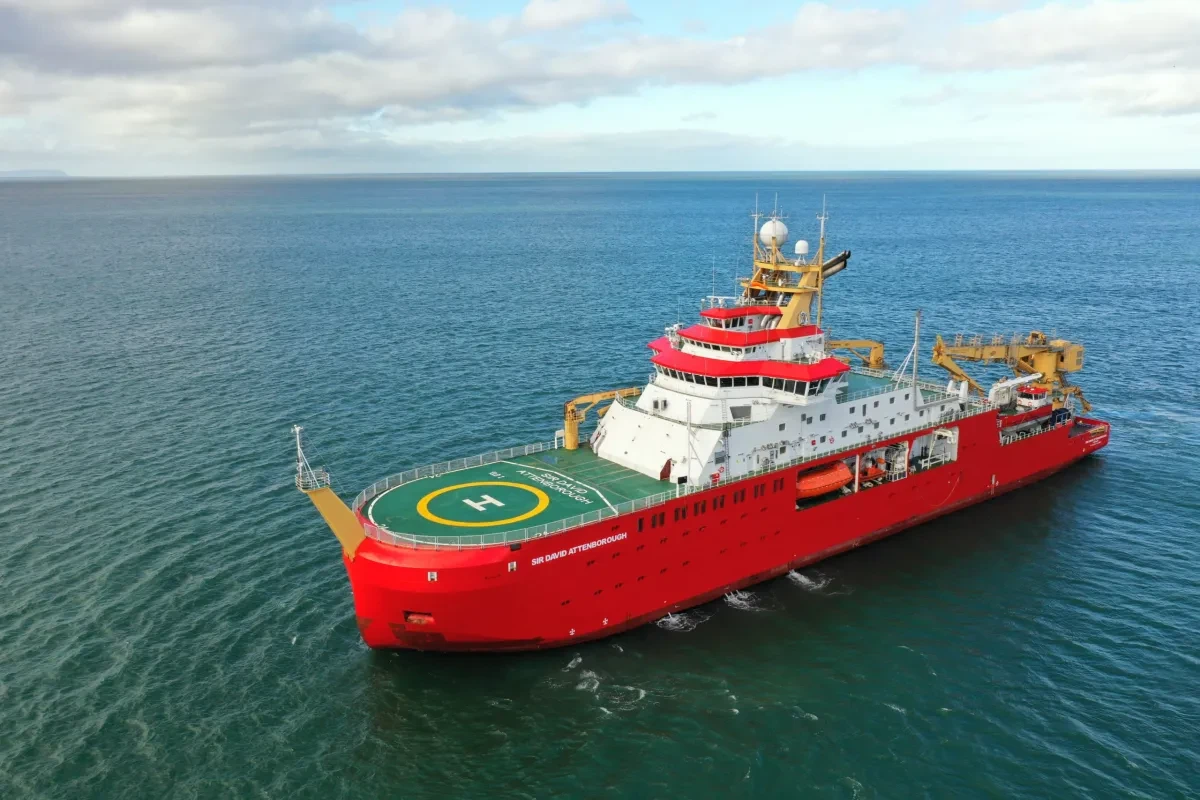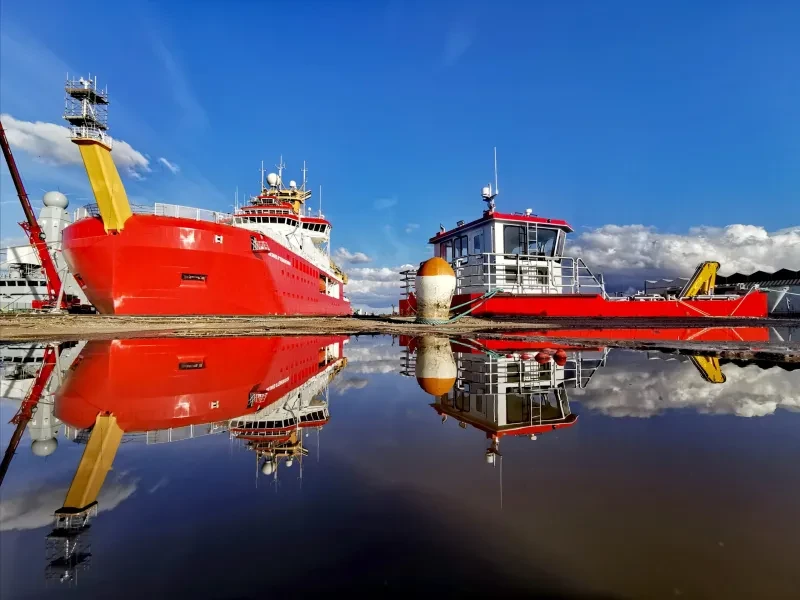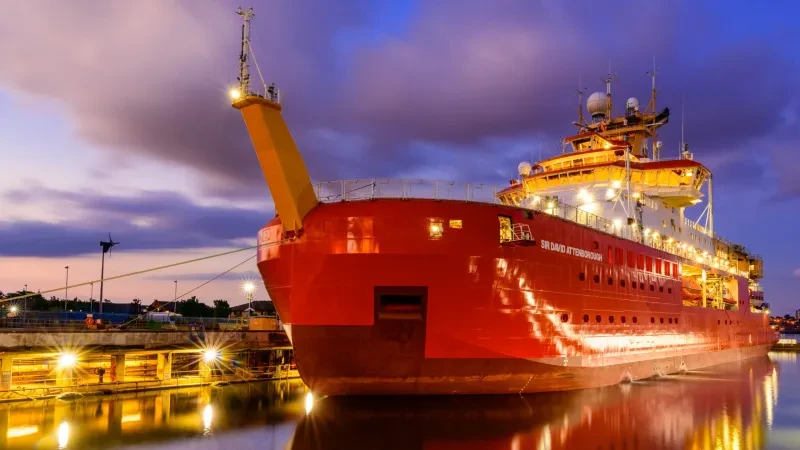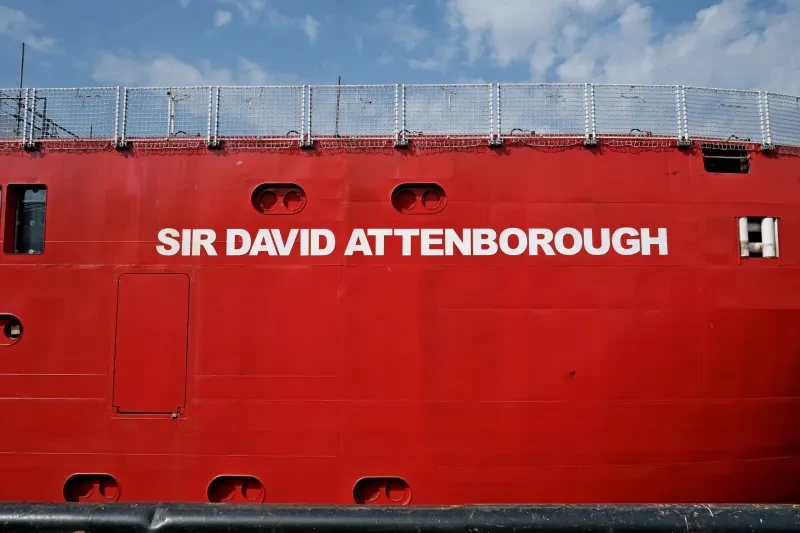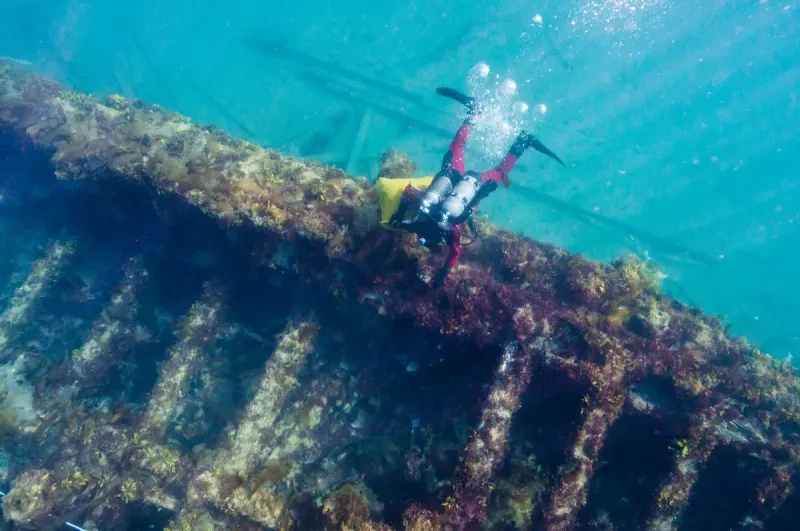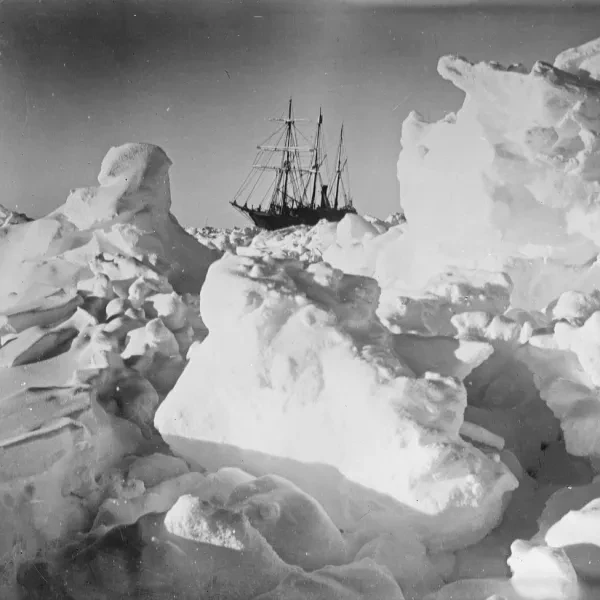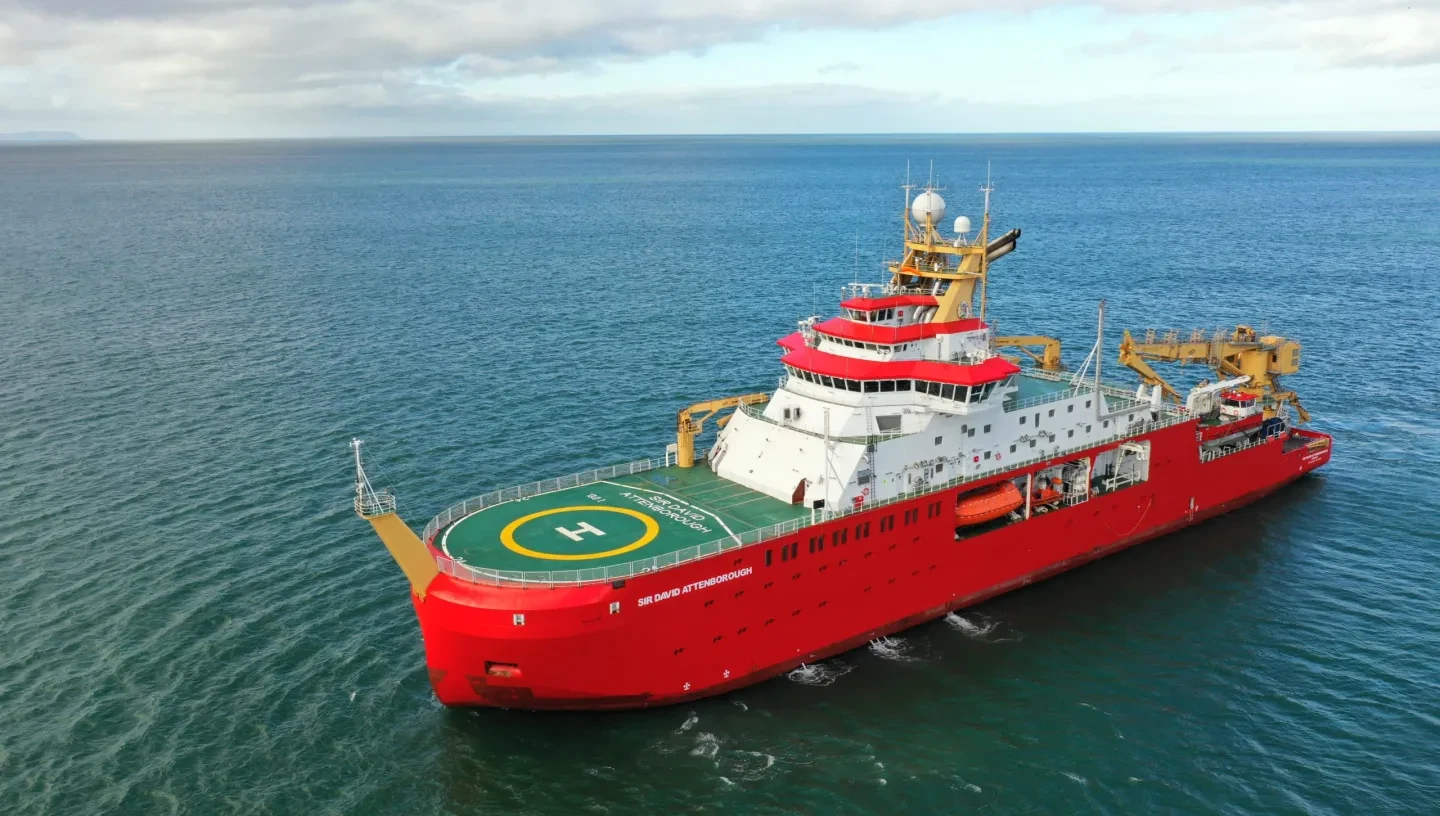
Royal Research Ship Sir David Attenborough is one of the most advanced polar research vessels in the world.
It is designed to carry out important scientific research in some of the most extreme environments on Earth. It will also provide vital supplies to the UK's research stations in both the Arctic and Antarctic.
The ship was commissioned by the Natural Environment Research Council, built by Cammell Laird and is operated by the British Antarctic Survey.
Delve deeper
Find out more about the RRS Sir David Attenborough
Polar science
Find out more about just some of the work that the RRS Sir David Attenborough will support
Polar exploration: then and now
Science has always played a key role in expeditions to the Arctic and Antarctic. As we confront the climate crisis, understanding that legacy is more important than ever.
The National Maritime Museum is home of some of the most important records and artefacts in British polar exploration history, including relics from HMS Erebus and Terror and items belonging to Captain Scott and Ernest Shackleton.
With RRS Sir David Attenborough, a new chapter in our polar story is beginning. Visit the National Maritime Museum to chart the history of Arctic and Antarctic exploration, and discover what the future may hold for these vital places.
